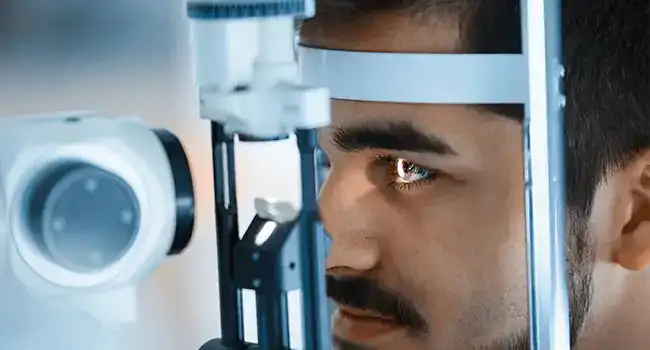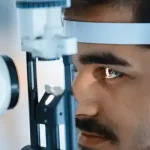Almost every one of you must have gone through an eye exam in your life, regardless of whether you wear glasses/contacts or not. Eye exams are a part of our routine health checkups during our growing years. Even now, for those who wear glasses/contacts, you must still go through regular eye exams to check your vision.
The eye exams that you most commonly go through are to check your visual acuity. These eye exams are called visual acuity tests. A visual acuity test examines your ability to see symbols or letters from a given distance — say, 6 metres.
Visual acuity tests are important for visual acuity diagnosis. There are various visual acuity tests and can be performed by an ophthalmologist, an optometrist or an optician, depending on the type of test.
Visual acuity tests are usually simple, involving no risks. The instructions are easy to follow and are communicated to you by the person performing the test.
In this article, we will learn about the purpose of these tests and go through some of the most commonly performed visual acuity tests.
Why and When are Visual Acuity Tests performed?
Visual acuity tests are the most commonly performed eye exams but are only a part of a complete eye exam. A comprehensive eye exam includes testing your colour vision, peripheral vision and depth perception. A visual acuity test is performed as a routine checkup in kids to check vision-related problems and help to prevent them at an early age. As a grown-up, you should go for a visual acuity test if you experience any vision changes like blurred vision or double vision.
These tests help measure your vision, with the help of which your ophthalmologist or optometrist prescribes the right corrective glasses to achieve the desired vision.
Visual Acuity Tests Procedure
Now that we have gone through visual acuity tests briefly, we can move on to the procedure: how the tests are performed. The two most common visual acuity tests are the Snellen eye chart and the Random E test. Let’s delve deep into some details:
Snellen eye chart
This is the most common visual acuity test. You must have gone through a Snellen eye exam at least once in your life, mostly during your childhood.
In this exam, there is a chart called a Snellen chart that has letters or symbols printed on it.
The letters are of different sizes. The chart is placed about 20 feet away, and your examiner asks you to read out the letters or recognize the symbols. This test is done separately for both eyes by covering one eye and reading out whatever you see with the other eye.
Random E test
With this test, you are asked to identify the direction in which the letter ‘E’ is facing. The letter ‘E’ is either projected on a wall or represented on a chart. Your examiner will ask you to point in the direction the letter ‘E’ is facing.
Both these tests measure your vision and help your doctor to provide you with the right visual correction.
What does a visual acuity of 6/6 mean?
You must have often heard people say they have a normal vision of 6/6. But what does that really mean?
Well, as we have already discussed above, visual acuity tests are performed at a distance of 20 feet (6 metres). So, when a person can read the line on the chart, marked or represented as normal acuity, the person is said to have a normal vision of 20/20 or 6/6.
Visual acuity test 6/6 is performed to determine if you have a visual acuity of 6/6. This is achieved if you can read the smallest line with naked eyes without the help of any corrective lenses.
Why Choose Centre for Sight?
Centre for Sight is the leading chain of eye care hospitals and clinics since 1996.
Centre for Sight has its eye care centres and hospitals all over the country with a team that aims at providing you with the best eye care facilities and services. Our eye care specialists guide you through the whole examination part and give you detailed instructions for any procedure you opt for.
Article: What is a Visual Acuity Test?
Author: CFS Editorial Team | May 07 2021 | UPDATED 04:00 IST
*The views expressed here are solely those of the author in his private capacity and do not in any way represent the views of Centre for Sight.





